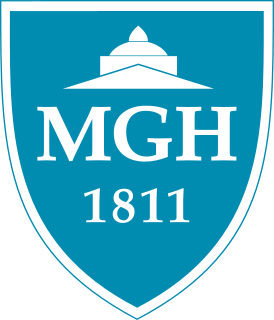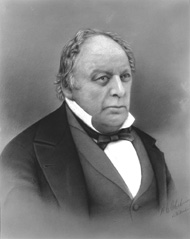
Mount Auburn Cemetery is the first rural, or garden, cemetery in the United States, located on the line between Cambridge and Watertown in Middlesex County, Massachusetts, 4 miles (6.4 km) west of Boston. It is the burial site of many prominent members of the Boston Brahmins, as well being a National Historic Landmark.

The Massachusetts State House, also known as the Massachusetts Statehouse or the New State House, is the state capitol and seat of government for the Commonwealth of Massachusetts, located in the Beacon Hill neighborhood of Boston. The building houses the Massachusetts General Court and the offices of the Governor of Massachusetts. The building, designed by architect Charles Bulfinch, was completed in January 1798 at a cost of $133,333, and has repeatedly been enlarged since. It is considered a masterpiece of Federal architecture and among Bulfinch's finest works, and was designated a National Historic Landmark for its architectural significance.

Quincy Market is a historic market complex near Faneuil Hall in downtown Boston, Massachusetts. It was constructed in 1824–26 and named in honor of Mayor Josiah Quincy, who organized its construction without any tax or debt. The market is a designated National Historic Landmark and Boston Landmark, significant as one of the largest market complexes built in the United States in the first half of the 19th century.

United First Parish Church is a Unitarian Universalist congregation in Quincy, Massachusetts, established as the parish church of Quincy in 1639. The current building was constructed in 1828 by noted Boston stonecutter Abner Joy to designs by Alexander Parris. The building was designated a National Historic Landmark on December 30, 1970, for its association with the Adams family, who funded its construction and whose most significant members are interred here.

The Maine State House in Augusta, Maine is the state capitol of the State of Maine. The building was completed in 1832, one year after Augusta became the capital of Maine. Built using Maine granite, the State House was based on the design of the Massachusetts State House.
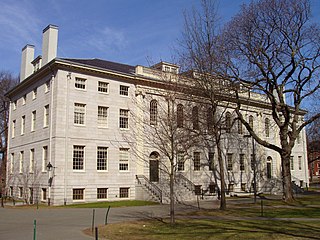
University Hall is a white granite building designed by the great early American architect Charles Bulfinch and built by the noted early engineer Loammi Baldwin, Jr. It is located in Harvard Yard on the campus of Harvard University in Cambridge, Massachusetts. It was designated a National Historic Landmark in 1970 for its architectural significance.
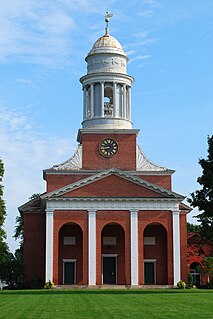
The First Church of Christ, Unitarian, also known as First Church of Christ, Lancaster and colloquially as "the Bulfinch Church", is an historic congregation with its meeting house located at 725 Main Street facing the Common in Lancaster, Massachusetts. The church's fifth meeting house, built in 1816, was designed by architect Charles Bulfinch, and was designated a National Historic Landmark in 1977, recognizing it as one of Bulfinch's finest works.

The Samuel Gridley and Julia Ward Howe House is a historic rowhouse at 13 Chestnut Street in the Beacon Hill neighborhood of Boston, Massachusetts, United States. It was designated a National Historic Landmark in 1974 for its association with the social reform couple, Julia Ward Howe and Samuel Gridley Howe. The Howes lived in the house, which was likely designed by renowned Boston architect Charles Bulfinch, from 1863 to 1866. It has served as the temporary official residence of the British Consul General to New England since 2016.

The Norfolk County Courthouse is a National Historic Landmark at 650 High Street in Dedham, Massachusetts. It currently houses the Norfolk County Superior Court. It is significant as a well-preserved Greek Revival courthouse of the 1820s, and as the site a century later of the famous Sacco-Vanzetti trial. The building was declared a National Historic Landmark in 1972, and is listed on the National Register of Historic Places.

The Armory of the First Corps of Cadets is an historic armory at 97–105 Arlington Street and 130 Columbus Avenue in Boston, Massachusetts. The four-story granite structure was designed by William Gibbons Preston and built beginning in 1891 and finished in 1897. Due to political unrest during the period, the building was designed to withstand mob violence. Its most prominent feature is its six-story tower. It is built in the Romanesque Revival style. The buildings staircases are built by the Guastavino system, as are some tower vaults.

The Boylston Building is an historic building at 2–22 Boylston Street in Boston, Massachusetts. The six-story sandstone building was designed by Carl Fehmer and built in 1887 by Woodbury & Leighton. It is an early instance in Boston of a skeleton-built commercial structure, rather than having load-bearing masonry walls. The building housed the Boylston Market, a wholesale trading exchange which had been on the site since 1810.
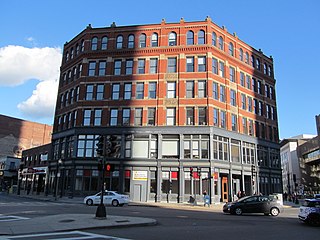
The Bulfinch Triangle Historic District is a historic district roughly bounded by Canal, Market, Merrimac, and Causeway Streets in the West End of Boston, Massachusetts. It is part of the Bulfinch Triangle neighborhood, which is bounded by North Washington, Market, Merrimac, and Causeway Streets. The district was laid out on a filled-in cove by Charles Bulfinch, and is now populated by well-preserved commercial buildings from the 1870s through early 1900s. It was added to the National Register of Historic Places in 1986.

The Second Brazer Building is an historic office building at 25-29 State Street in Boston, Massachusetts. It is a locally significant early Beaux Arts design.

The Almshouse is an historic almshouse located at 45 Matignon Road in Cambridge, Massachusetts. It is now the site of the International School of Boston's main campus. It was built in 1850, and is a prominent example of institutional residential architecture in stone, resembling prisons of the era. The building was added to the National Register of Historic Places in 1982, where it is incorrectly listed at 41 Orchard Street.

North Avenue Congregational Church is a historic church meetinghouse at 1801(previously at 1803) Massachusetts Avenue in Cambridge, Massachusetts. It has been renovated to become a library for Lesley University as part of the Lunder Arts Center complex.

The East Cambridge Historic District encompasses the historic center of East Cambridge, Massachusetts. It includes the major buildings that were built to house county services for Middlesex County beginning in the 1810s, and a cluster of largely vernacular Greek Revival worker housing located west of the county complex on Otis, Thorndike, Spring, and Sciarappa Streets. The district was listed on the National Register of Historic Places in 1983.

The Ether Monument, also known as The Good Samaritan, is a statue and fountain near the northwest corner of Boston's Public Garden, near the intersection of Arlington Street and Marlborough Street.

